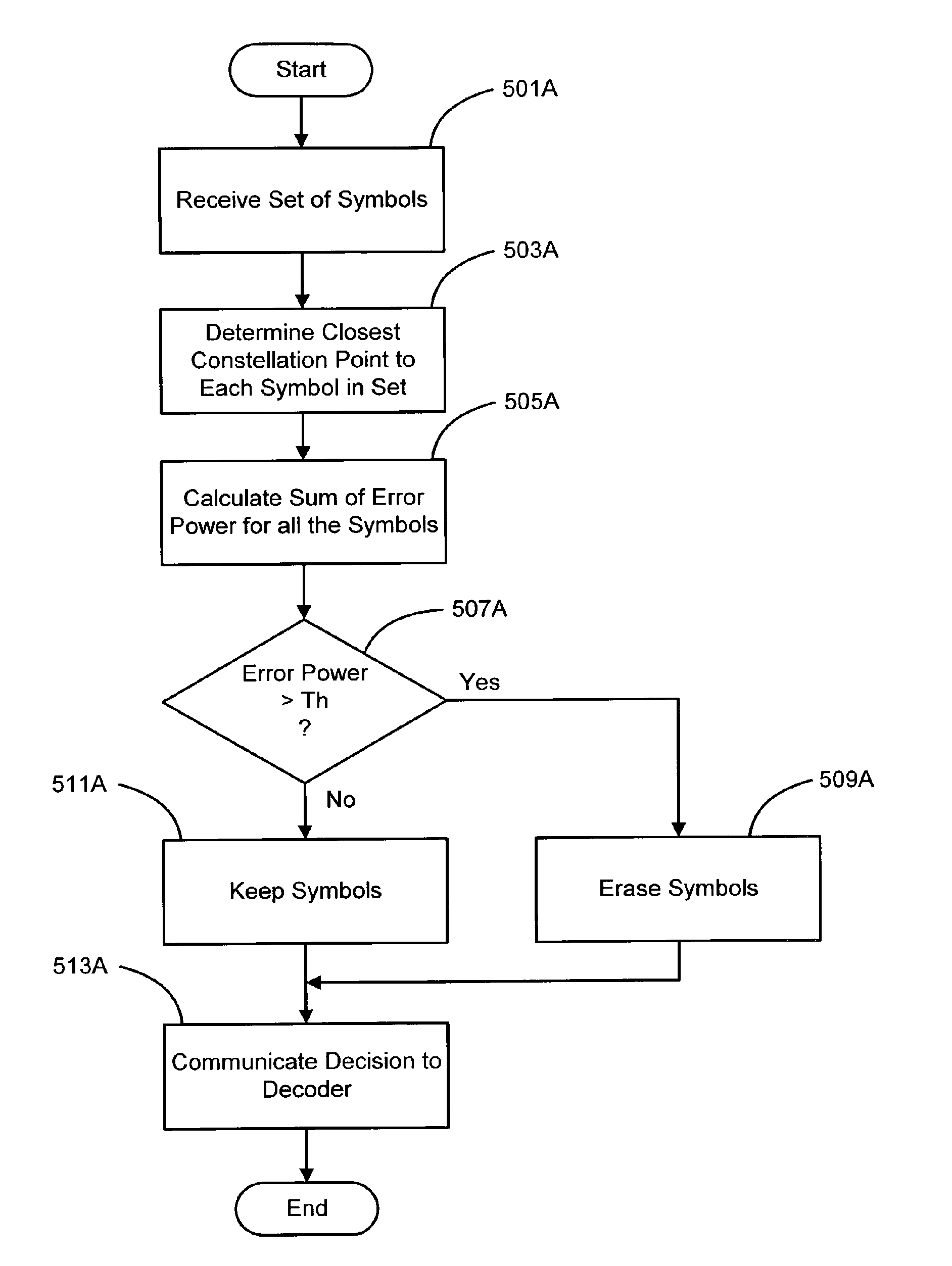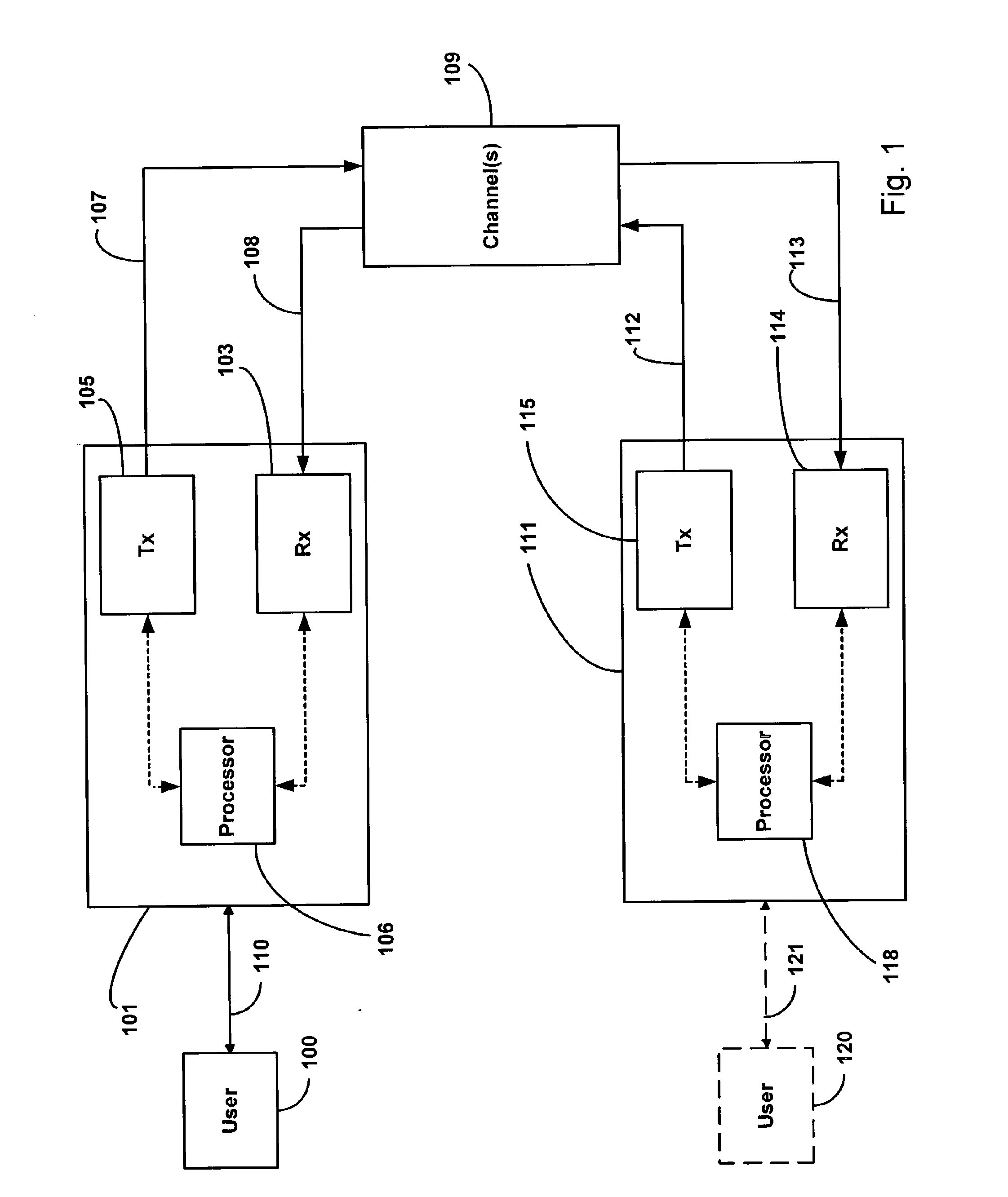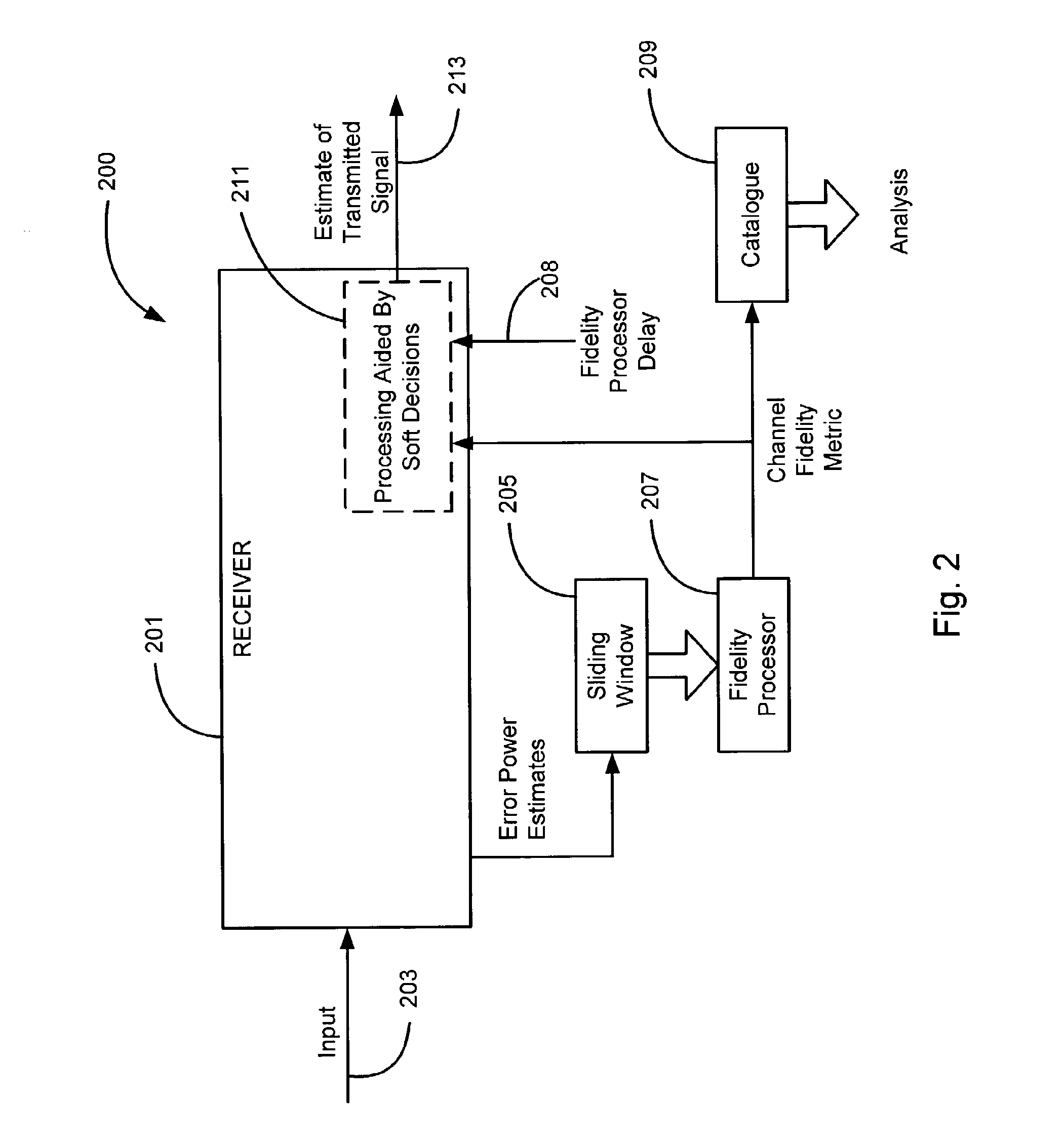Detection and Mitigation of Temporary (Bursts) Impairments in Channels Using SCDMA
a technology of scdma and channel, applied in the field of communication channels, can solve the problems of affecting communication, affecting communication, and affecting communication, and achieve the effect of reducing the deleterious effects of dynamic impairment and reducing severe impairment of signals
- Summary
- Abstract
- Description
- Claims
- Application Information
AI Technical Summary
Benefits of technology
Problems solved by technology
Method used
Image
Examples
Embodiment Construction
[0047]The following description is made with reference to the appended figures.
[0048]One embodiment of the present invention relates to a spreading technique to transmit a plurality of symbols at the same time on the same frequency. More specifically, one embodiment of the present invention relates to an SCDMA technique for mitigating temporary, high levels of impairments of one up to several chips in communication channels used, in one embodiment, with the DOCSIS standard. It is contemplated that, while an SCDMA spreading or modulating technique is discussed, any spreading or modulating techniques such as OFDM, DMT, and SWMT for example, are contemplated.
[0049]According to one embodiment of the present invention, temporary impairments or other distortion-inducing mechanism of duration of one up to several chips (16 chips for example) may be detected. It is contemplated that, while such impairment of 16 chips in duration is discussed; a severe impairment (even of a shorter duration)...
PUM
 Login to View More
Login to View More Abstract
Description
Claims
Application Information
 Login to View More
Login to View More - R&D
- Intellectual Property
- Life Sciences
- Materials
- Tech Scout
- Unparalleled Data Quality
- Higher Quality Content
- 60% Fewer Hallucinations
Browse by: Latest US Patents, China's latest patents, Technical Efficacy Thesaurus, Application Domain, Technology Topic, Popular Technical Reports.
© 2025 PatSnap. All rights reserved.Legal|Privacy policy|Modern Slavery Act Transparency Statement|Sitemap|About US| Contact US: help@patsnap.com



